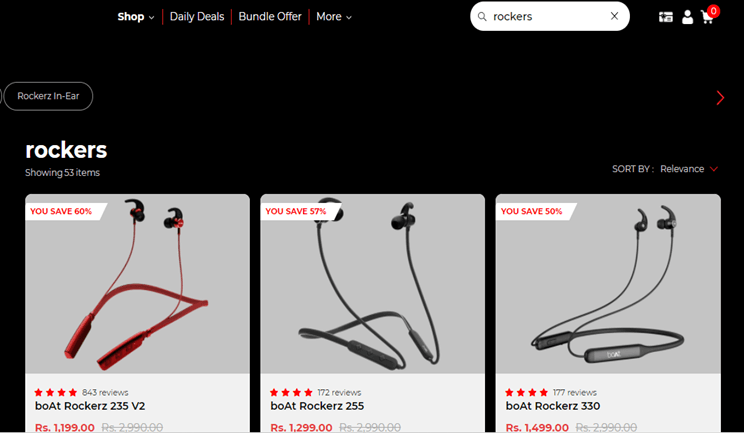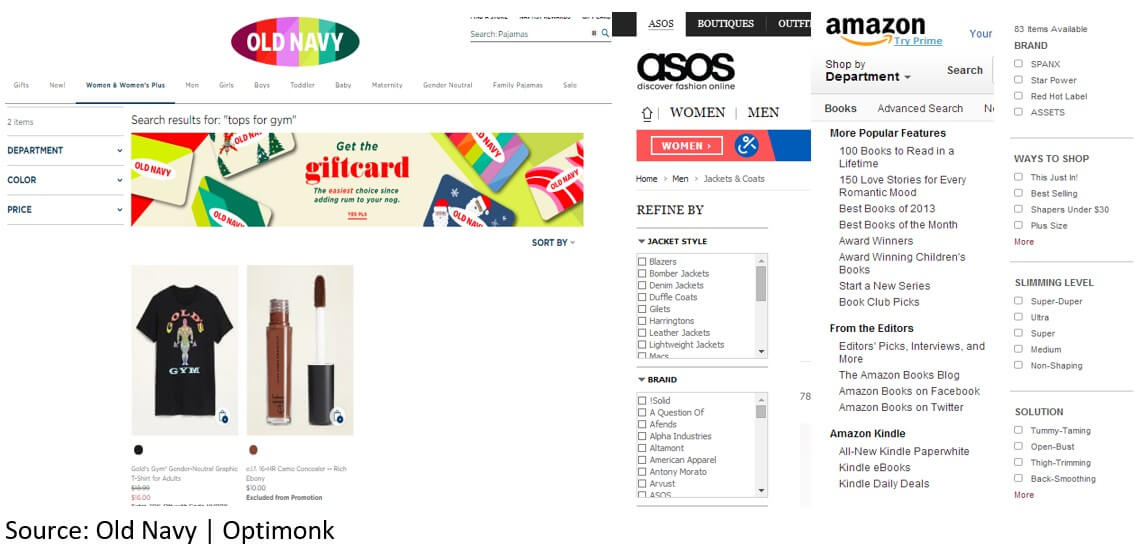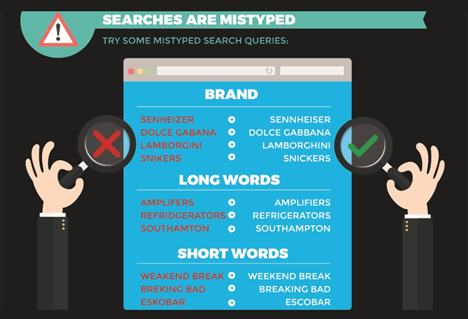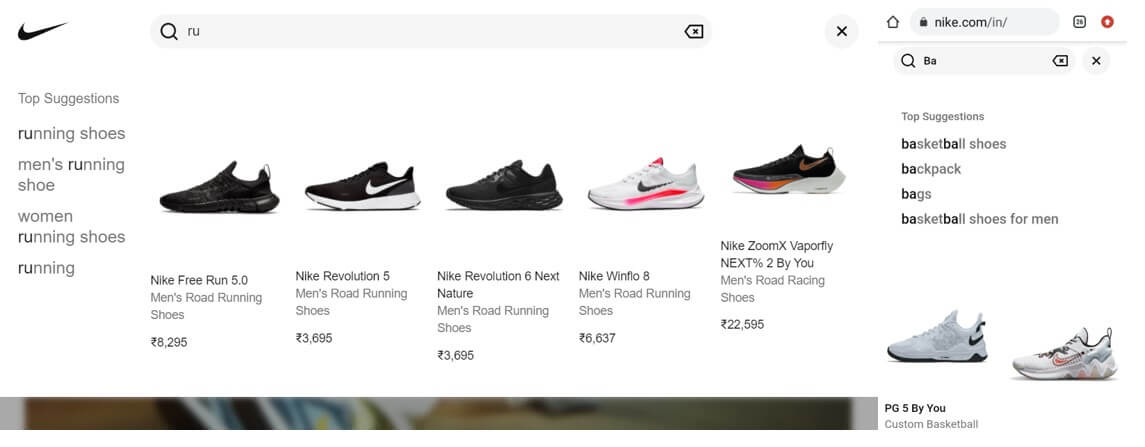Ever wondered how accurate are the search results for a set of keywords on your e-commerce website? On-site search quality or internal search quality is an integral aspect of your website’s performance and yet quite often underestimated or overlooked. While studies suggest that 68% of shoppers wouldn’t return to a site after a poor internal search experience, only 15% of companies have actually assigned exclusive efforts resources to improve their on-site search quality.
Why is on-site search quality so important? We’ll let the numbers do the talking:
- It has been observed that only 15% of total visitors used site search. However, these visitors accounted for 45% of all revenue.
- 43% of retail website users head directly for the search bar.
- Internal data from SearchNode shows that approximately 30-60% of all e-commerce site revenue is generated by on-site searchers.
With so much at stake, it’s safe to say that ignoring on-site search quality would mean leaving substantial revenue opportunities on the table. In that case, what factors should e-commerce businesses focus on to drive more conversions through their internal-site search results? Let’s dive in.
1. Extrapolate insights
The insights brands and retailers can get from their internal site search are quite often understated. Looking for signals in these places can help your drive more informed and strategic decisions.
- Keywords – Skim through and analyze your internal search data for new and unique keywords to target in your Pay-Per-Click (PPC) or organic SEO campaigns.
- Conversions – Dig into your conversion statistics based on internal search results. This will help inform your perspective on the most relevant products and content with conversion power. This in turn can pave the way for your future campaigns, product strategies, and SEO strategies, as well as offline marketing.
- Click-through rate (CTR) – If your site’s results are witnessing a low CTR, it’s probably not meeting the needs of users. It might be worthwhile to reconsider your site search’s relevance.
- Queries – Insights from your internal site search results can actually help you make more confident decisions like featuring popular results on the homepage, moving trending products to the top of the search results, or filling in any content gaps across product pages.
- Click position – Analyzing this can provide granular insights into your average shopper’s interests – an invaluable treasure of information that will enable you to roll out more targeted and ROI-driven SEO and online and offline marketing promotions.

2. Consider a range of errors and offer to auto-correct
Almost 84% of companies fail to optimize and measure their on-site search. This means taking into considerations aspects like phonetic misspellings and typos. Doing this will help you ensure that simple mistakes like these don’t reflect an empty results page. For instance, in the search result on Boat’s website, the results for their product range called Rockerz still displayed relevant content despite the search keyword entered being misspelled. Search engine effectiveness can be enhanced by interpreting a query’s intended meaning and parsing long, complex search queries using natural language processing.
3. Offer synonym results
Even today, 70% of (desktop) e-commerce search implementations fail to deliver relevant results for product-type synonyms. Depending on your needs, you might need to manually enter these synonyms in some search systems. In other cases, these libraries are built using natural language processing.
For instance, if you sell both grocery and personal care on your website, a search for “cream” should yield both consumable dairy cream products as well as cold cream products for external use.
4. Refine relevance to semantic search
The purpose of semantic search is simply to emulate the way people typically speak and process search terms accordingly. Why you shouldn’t ignore it? Not using semantic search makes your internal search engine is highly prone to the complexities of human language and may thereby miss contextual cues. For instance, Old Navy’s e-commerce site carries activewear but when you search for “tops for gym”, it returns only two items, one of which is irrelevant.
Similarly, it makes sense to allow your shoppers to customize their results based on product type, brand, price, discount range, size, etc. This is called faceted search and the deeper the customizations you offer, the more it proves how much you value personalizing the buying experience. Below are a few examples.

5. Reduce null result possibilities
As the adage goes, ‘Never say no,’ and it holds quite true for visitors who come to your site in the hope of fulfilling their needs. Studies show that the real reason behind 10%-25% of all searches ending on a 0-results page is that quite often search engines aren’t able to process language. In such scenarios, it is wise to check your ‘No results page’ report. You will uncover simple spelling issues like the brand “Skechers” being misspelled as “Sketchers”.
While it’s true that irrelevant results can put off a shopper, savvy e-commerce players who don’t have the product in question have calibrated their search engines to recommend the closest products to that search term instead of displaying an empty screen. This helps maximize your conversion opportunities, and also leaves the customer feeling a bit more hopeful.

6. Anticipate user intent with auto-suggest
The moment you provide your users with an autocomplete experience similar to that of Google or Amazon, they will feel comfortable and incredibly accustomed to your site’s search. A high conversion rate comes from matching the user’s query in seconds rather than compelling them to scroll through countless results. For instance, Nike’s search function immediately presents suggestions the moment a user starts typing, so they don’t have to waste time trying to get their query exactly right, thus providing a proactive and seamless search experience.

7. Add a voice search functionality
40% of consumers use voice to order or buy something every month. With mobile and tablets generating over half of your traffic, adding a feature that will only grow in use and make your site search more accessible, makes perfect sense. Using voice your visitors will be empowered to search for products more instinctively, eliminating the manual process of keying in every word and introducing a more conversational interface that only enhances your site experience.
Online players looking to improve performance must be realistic about where their pain points lie and what actionable strategies can be implemented to achieve success. Keeping an eye on your analytics data is a great way to identify problem areas, such as the number of searches exits that occur on your website. Shoppers who use the search bar on your website almost always have a specific product in mind to buy. Therefore an accurate, quick search is highly critical in leading these shoppers to the right products.
For over two decades, Netscribes has been supporting leading brands in developing and refining their e-commerce sites through a host of e-commerce solutions. To know how we can help effectively optimize your on-site search quality, contact us.






